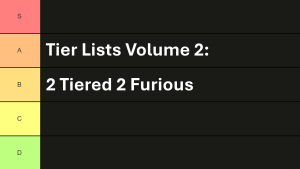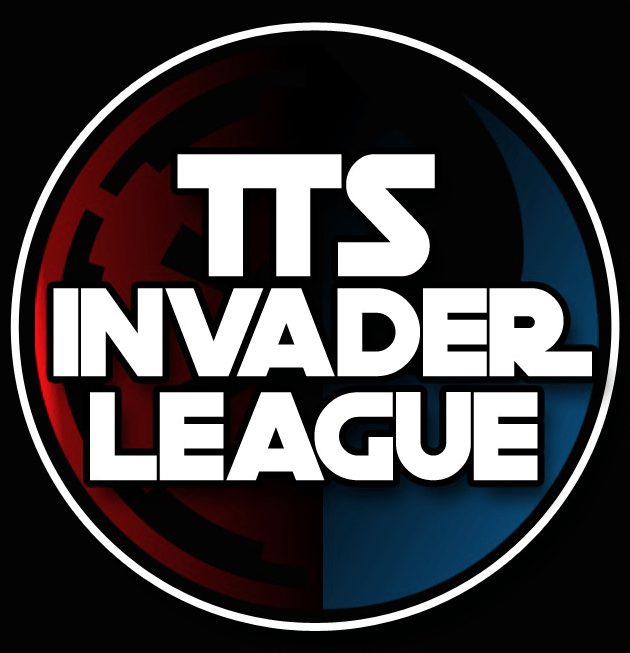
Trending Today

Invader League Season 2 is underway! That means a lot of exciting things.
First, it means there are many fun and competitive matches being played on Table Top Simulator (TTS), possibly right meow. Playing on TTS is not quite as good as rolling real dice, but it is a good way for folks to connect and run truly international tournaments like this one. I won’t go into detail on the Legion Mod for TTS here, but if you are curious Imperial Discipline has a solid write-up on it.
Second, the progression of the Invader League offers us an opportunity to collect some stats. Unfortunately the data is never as detailed as a nerd like myself would like, but there are still plenty of interesting things to dissect. Today, we are going to look at some of those stats and try to read between the tea leaves* to determine what, if anything, they mean for the game.
Lastly, it means we have another tournament for Key Positions to make its impact felt. Don’t worry… we’ll talk about Key Positions.
Endless over at Yavinbase does a much more thorough job explaining the league here, so I won’t go into too much detail. Basically, it is a two stage, online Legion tournament. The first stage is a Round Robin, where players compete within their assigned groups for a top spot. The top two players in each group advance to the second stage, which is a single elimination style bracket. Invader League Season 2 has a whopping 60 players across 12 groups, which means 24 players will advance to the single elimination style bracket. Seeding for stage two is based on player record and points scored.
Luckily for data whores like me, Invader League captures a variety of interesting data points as games are completed. Lets talk real quick about what is collected and what isn’t, and then draw some extremely small sample size conclusions.
You can find up to date results on the groups here (US) and here (EU/AS).
Right meow, the most interesting things to look at are probably the faction win/loss breakdown and the objective/condition/deployment cards .
As of the date the underlying report was run (9/21), 42 out of 120 games had been played. That is like, 30% or something of games played.
The total breakdown of factions is relatively evenly split; 27 Rebels, 33 Imperials. Oddly, there is a pretty significant regional split. The EU/AS groups contain 11 Rebels and 4 Imperials, while the US groups contain 16 Rebels and 29 Imperials.
Lets get real, though. I know you don’t care that much about how many Rebels and Imperials there are. You care about which faction is better. Neither, is the short answer. We’re here to talk about numbers, though, and there are some numbers to look at. Small sample size caveat applies, of course, but one faction is winning a lot more non-mirror matches (cross faction matches) than the other. I’ll give you a hint. They are a bunch of peace-hating terrorists that reject order and prosperity.
Yup… Rebels have a pretty clear advantage so far. Out of 18 cross-faction matches played (as of Sept. 21), Rebels have won 12 of them. I can’t really add, but that’s like, twice as many as Imperials have won (6).
A few caveats here, beyond the small sample size. Though the base commandos and scouts are legal, their heavy weapon upgrades are not (for either faction), because the scout preview article had not been released as of the start of the season. So no snipers and no saboteurs. They will be legal for the elimination stage, though, which could get very interesting.
I don’t want to read too much into this at the moment due to the sample size, but we’ll definitely revisit this issue once more matches have been played and some more data is generated.
It is hard to do any really detailed analysis here, since we don’t know who was red/blue, what was vetoed, and by whom. However, since we do know what Objectives, Deployments, and Conditions were ultimately played, we can at least tell which ones are most popular. These are the least objectionable cards, I suppose.

Intercept, Major Offensive, and Rapid Reinforcements are the most popular setup cards used after vetoes have been made. The least popular cards are Breakthrough, Disarray, and Hostile Environment. Key positions was played 5 times… probably not by the choice of the red player. More on that below.
Generally the top results here should represent cards that most lists think they can deal with, while the least popular ones favor a particular kind of build and thus are more susceptible to being vetoed.
Aye, there’s the rub. You can’t talk about Turn 0 without talking about Key Positions.
Although the reports don’t capture which player was red or blue, luckily there were only 5 of these games in the sample. This was few enough games that I contacted each of the winners to determine which color they picked.
It should not be surprising, but I verified that every single one of the 5 winners on Key Positions was blue player. Now, 5 games is not a lot. Huge small sample caveat. Anecdotally, however, it confirms what we already know about this objective; strong blue player advantage. I will definitely be keeping an eye on this trend as more games are played.
Data aside, I have heard some interesting ideas about how to ‘fix’ Key Positions. Generally the ideas follow two approaches; altering the objective itself, or altering the Turn 0 (setup) process to prevent situations where one player can force a particular card to be used (because it is in the third slot). Here are the ones I have see so far. The two approaches are not mutually exclusive.
What do you think of any of the above ideas?
There isn’t any hard data on this yet, but I talked to a few of the streamers (including Endless at Yavinbase) to see what units/commanders they are seeing, and which ones they aren’t.
More updates will follow in future posts, including a look at the list(s) of those advancing to stage two.
*Did I get that expression right? I am about as useful as a screen door on a battleship when it comes to such things.


Copyright © 2024 The Fifth Trooper. All Rights Reserved.